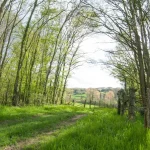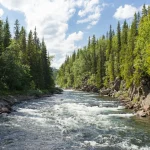
Exploring the Arctic Wonders: A Journey to Svalbard, Norway

Getting to Svalbard can be an adventure in itself. The main gateway to the archipelago is Longyearbyen, the largest settlement on the islands. There are several options for reaching Svalbard, including flights and cruises.
Flights to Svalbard are available from several major cities in Norway, as well as from some international destinations. The main airline serving Svalbard is SAS, which offers regular flights from Oslo and Tromsø. Another option is to take a cruise to Svalbard. Many cruise lines offer Arctic expeditions that include stops in Svalbard, allowing you to explore the islands while enjoying the comfort and amenities of a cruise ship.
When it comes to travel deals and vacation packages, there are plenty of options available for Svalbard. Many tour operators offer all-inclusive packages that include flights, accommodations, and activities. These packages can be a great way to save money and ensure a hassle-free trip. It’s also worth keeping an eye out for special deals and promotions, as many tour operators offer discounts on Svalbard trips during certain times of the year.
If you’re on a budget, there are also ways to save money on your trip to Svalbard. Booking your flights and accommodations in advance can help you secure the best deals. Additionally, consider traveling during the shoulder seasons (spring and fall) when prices tend to be lower. Finally, look for budget-friendly activities and tours, such as self-guided hikes or wildlife watching excursions.
Adventure Tourism: Exploring the Arctic Wilderness
One of the main draws of Svalbard is its vast wilderness, which offers endless opportunities for adventure. Whether you’re an experienced hiker, kayaker, or dog sledder, Svalbard has something for everyone.
Hiking is a popular activity in Svalbard, with numerous trails that wind through the archipelago’s stunning landscapes. From easy walks to challenging multi-day treks, there are options for all fitness levels. Some of the most popular hiking routes include the Nordenskiöld Glacier Trail and the Barentsburg Valley Trail.
For those who prefer to explore the waterways, kayaking is a fantastic option. Paddling through the crystal-clear waters of Svalbard allows you to get up close and personal with its stunning glaciers and wildlife. Many tour operators offer guided kayaking trips that cater to all skill levels.
Another unique adventure in Svalbard is dog sledding. This traditional Arctic activity allows you to experience the thrill of gliding across the snow-covered landscapes while being pulled by a team of energetic huskies. Dog sledding tours are available year-round, with winter being the most popular time to try this exhilarating activity.
While exploring the Arctic wilderness can be incredibly rewarding, it’s important to be prepared and stay safe. Svalbard’s remote location and harsh climate can present challenges, so it’s essential to have the right gear and knowledge. Always check the weather conditions before heading out and make sure to bring appropriate clothing and equipment. It’s also advisable to go on guided tours or hire experienced guides who can provide valuable insights and ensure your safety.
Luxury Travel: Experiencing Svalbard in Style
If you’re looking for a more luxurious experience in Svalbard, you’re in luck. Despite its remote location, the archipelago offers a range of high-end accommodations and exclusive experiences for discerning travelers.
When it comes to accommodations, Svalbard has a few luxury hotels that offer top-notch amenities and services. These hotels are known for their comfortable rooms, gourmet dining options, and stunning views of the surrounding landscapes. Some even have spas and wellness centers where you can relax and rejuvenate after a day of exploring.
In addition to luxury hotels, there are also private tour operators that offer exclusive experiences in Svalbard. These tours cater to small groups and provide personalized itineraries that allow you to explore the archipelago’s hidden gems. From helicopter tours to private wildlife encounters, these experiences are designed to provide a once-in-a-lifetime adventure.
When planning a luxurious Arctic adventure in Svalbard, it’s important to book well in advance, as availability can be limited. It’s also worth considering traveling during the shoulder seasons when prices tend to be lower. Finally, don’t forget to pack appropriate clothing for the Arctic climate, as even luxury accommodations may not provide all the necessary gear.
Budget Travel Tips: How to Save Money on Your Arctic Adventure
| Category | Metric |
|---|---|
| Accommodation | 5-star hotel with Arctic views |
| Transportation | Private jet and helicopter transfers |
| Activities | Dog sledding, snowmobiling, ice caving, and Northern Lights viewing |
| Cuisine | Fine dining with locally sourced ingredients |
| Duration | 7 days |
| Price | Upon request |
While Svalbard may seem like an expensive destination, there are ways to experience its wonders on a budget. With a little planning and flexibility, you can have an unforgettable Arctic adventure without breaking the bank.
One of the easiest ways to save money on your trip to Svalbard is by booking your flights and accommodations in advance. Many airlines and hotels offer early bird discounts, so it’s worth keeping an eye out for special deals. Additionally, consider traveling during the shoulder seasons when prices tend to be lower.
When it comes to activities, there are plenty of budget-friendly options in Svalbard. Many hiking trails are accessible for free, allowing you to explore the archipelago’s stunning landscapes without spending a dime. Wildlife watching is another affordable activity, as you can observe polar bears, Arctic foxes, and reindeer from a safe distance without the need for expensive tours.
If you’re looking for guided tours or activities, consider booking with local operators instead of international tour companies. Local operators often offer more affordable prices and provide a more authentic experience. It’s also worth considering self-guided tours, which allow you to explore at your own pace and save money on guide fees.
When it comes to accommodations, there are budget-friendly options available in Svalbard. Hostels and guesthouses offer affordable rates and provide a comfortable place to rest after a day of exploring. Additionally, consider booking accommodations with shared facilities, as they tend to be cheaper than private rooms.
Climate and Weather: What to Expect in Svalbard
Svalbard’s climate is characterized by long, cold winters and short, cool summers. The archipelago experiences a polar climate, with temperatures rarely rising above freezing even in the summer months. It’s important to be prepared for the harsh Arctic weather conditions when visiting Svalbard.
The best time to visit Svalbard depends on the type of activities you’re interested in. For outdoor adventures such as hiking and kayaking, the summer months (June to August) are the most suitable. During this time, temperatures can range from 0°C to 10°C (32°F to 50°F), and the days are long, with 24 hours of daylight.
If you’re interested in witnessing the Northern Lights, the best time to visit Svalbard is during the winter months (November to February). While temperatures can drop as low as -20°C (-4°F), the clear skies and long nights provide optimal conditions for viewing this natural phenomenon.
Regardless of when you visit, it’s important to pack appropriate clothing for the Arctic climate. Layering is key, as it allows you to adjust your clothing based on the temperature. Make sure to bring warm base layers, insulated outerwear, waterproof boots, and accessories such as hats and gloves. It’s also advisable to bring a good quality sunscreen and sunglasses, as the sun’s rays can be intense even in the Arctic.
Wildlife Watching: Polar Bears, Arctic Foxes, and More

One of the highlights of visiting Svalbard is the opportunity to observe its unique wildlife up close. The archipelago is home to a variety of species, including polar bears, Arctic foxes, reindeer, and numerous bird species.
Polar bears are perhaps the most iconic residents of Svalbard. These majestic creatures can be spotted throughout the archipelago, although they are most commonly seen near the coastlines and on sea ice. While polar bears are beautiful to observe, it’s important to remember that they are wild animals and should be treated with respect. Always maintain a safe distance and follow any guidelines provided by your guide or tour operator.
Arctic foxes are another common sight in Svalbard. These small and agile creatures are known for their beautiful white fur, which helps them blend in with the snowy landscapes. Arctic foxes are often seen scavenging for food near bird cliffs or hunting for small mammals in the tundra. Observing these playful animals in their natural habitat is a truly magical experience.
In addition to polar bears and Arctic foxes, Svalbard is also home to reindeer, which can be seen grazing on the tundra. These gentle creatures are well adapted to the harsh Arctic climate and can be observed from a safe distance. Birdwatchers will also be delighted by the numerous bird species that inhabit Svalbard, including puffins, guillemots, and kittiwakes.
When wildlife watching in Svalbard, it’s important to remember that you are a guest in their home. Always maintain a safe distance and avoid disturbing or approaching the animals. It’s also advisable to go on guided tours or hire experienced guides who can provide valuable insights and ensure your safety.
Cultural Experiences: Meeting the People of Svalbard
While Svalbard is known for its stunning landscapes and wildlife, it also has a rich cultural heritage and a vibrant community of residents. Meeting the people of Svalbard is a unique opportunity to learn about their way of life and gain insights into the challenges and joys of living in such a remote and harsh environment.
Svalbard has a diverse population, with residents hailing from all over the world. The archipelago is home to scientists, researchers, miners, and adventurers who have chosen to make Svalbard their home. Many of these residents are passionate about the environment and are actively involved in conservation efforts.
There are several ways to meet and interact with the people of Svalbard during your visit. One option is to visit Longyearbyen, the largest settlement on the islands. Here you’ll find shops, restaurants, and cultural centers where you can learn about the history and culture of Svalbard. It’s also worth attending local events and festivals, which provide a glimpse into the community’s traditions and customs.
When interacting with the people of Svalbard, it’s important to be respectful and open-minded. Remember that you are a guest in their home and should treat them and their culture with respect. Ask questions, listen to their stories, and be open to learning from their experiences. By engaging with the local community, you’ll gain a deeper understanding of Svalbard’s unique cultural heritage.
Outdoor Activities: Hiking, Kayaking, and Snowmobiling in the Arctic
Svalbard is a paradise for outdoor enthusiasts, offering a wide range of activities that allow you to explore its stunning landscapes and experience its unique environment. From hiking and kayaking to snowmobiling and glacier walks, there’s something for everyone in this Arctic wonderland.
Hiking is one of the most popular activities in Svalbard, with numerous trails that wind through the archipelago’s rugged landscapes. Whether you’re a beginner or an experienced hiker, there are options for all fitness levels. Some of the most popular hiking routes include the Nordenskiöld Glacier Trail, which takes you through breathtaking valleys and past towering glaciers, and the Barentsburg Valley Trail, which offers stunning views of the surrounding mountains.
For those who prefer to explore the waterways, kayaking is a fantastic option. Paddling through the crystal-clear waters of Svalbard allows you to get up close and personal with its stunning glaciers and wildlife. Many tour operators offer guided kayaking trips that cater to all skill levels, from beginners to experienced paddlers.
If you’re visiting Svalbard during the winter months, snowmobiling is a must-try activity. This exhilarating experience allows you to explore the archipelago’s snowy landscapes while enjoying the thrill of riding a snowmobile. Many tour operators offer guided snowmobiling tours that take you to remote areas of Svalbard, allowing you to witness its untouched beauty.
When planning outdoor adventures in Svalbard, it’s important to be prepared and stay safe. The archipelago’s remote location and harsh climate can present challenges, so it’s essential to have the right gear and knowledge. Always check the weather conditions before heading out and make sure to bring appropriate clothing and equipment. It’s also advisable to go on guided tours or hire experienced guides who can provide valuable insights and ensure your safety.
Why Svalbard is a Must-Visit Destination for Adventurers and Nature Lovers
In conclusion, Svalbard is a destination like no other. With its stunning natural beauty, unique wildlife, and rich cultural heritage, it offers a truly unforgettable experience for adventurers and nature lovers.
From the moment you arrive in Svalbard, you’ll be captivated by its untouched wilderness and awed by its natural wonders. Whether you’re hiking through its rugged landscapes, kayaking in its crystal-clear waters, or observing its majestic wildlife, every moment in Svalbard is filled with awe and wonder.
Whether you’re looking for adventure or luxury, Svalbard has something for everyone. From high-end hotels and private tours to budget-friendly accommodations and self-guided adventures, there are options to suit every traveler’s needs and preferences.
So why wait? Start planning your own Arctic adventure in Svalbard today. Whether you’re exploring the archipelago’s stunning glaciers, encountering its unique wildlife, or immersing yourself in its rich history, Svalbard offers a once-in-a-lifetime experience for every adventurer. With its untouched landscapes and pristine beauty, this Arctic paradise is a must-visit destination for those seeking an unforgettable journey. From dog sledding across the frozen tundra to witnessing the mesmerizing Northern Lights dancing across the night sky, Svalbard promises endless opportunities for awe-inspiring moments. So don’t hesitate any longer and embark on your Arctic adventure in Svalbard today.
If you’re planning a trip to Svalbard, Norway, you might also be interested in exploring the wonders of Sweden. Our article on Destination Mate, “Exploring the Wonders of Sweden,” provides a comprehensive guide to this beautiful Scandinavian country. From the vibrant city of Stockholm to the stunning landscapes of Lapland, Sweden offers a diverse range of experiences for every traveler. Discover the rich history, breathtaking nature, and unique cultural traditions that make Sweden a must-visit destination. Read more
FAQs
What is Svalbard?
Svalbard is an archipelago located in the Arctic Ocean, situated between Norway and the North Pole.
What is the population of Svalbard?
As of 2021, the population of Svalbard is approximately 2,667 people.
What is the climate like in Svalbard?
Svalbard has a polar climate, with long, cold winters and short, cool summers. The average temperature in January is around -16°C, while in July it is around 6°C.
What is the main industry in Svalbard?
The main industry in Svalbard is coal mining, although tourism and research are also important.
Do I need a visa to visit Svalbard?
No, you do not need a visa to visit Svalbard if you are a citizen of a Schengen country or a citizen of a country that has a visa-free agreement with Norway.
What is the official language of Svalbard?
The official language of Svalbard is Norwegian, although English is also widely spoken.
What is the currency used in Svalbard?
The currency used in Svalbard is the Norwegian krone (NOK).
What is the time zone in Svalbard?
Svalbard is in the Central European Time (CET) zone, which is one hour ahead of Coordinated Universal Time (UTC+1). During daylight saving time, Svalbard is in the Central European Summer Time (CEST) zone, which is two hours ahead of Coordinated Universal Time (UTC+2).
What is the highest point in Svalbard?
The highest point in Svalbard is Newtontoppen, which is 1,713 meters (5,620 feet) above sea level.
Recent Posts


Exploring the Best of Sweden: A Travel Guide to the Land of the Midnight Sun
